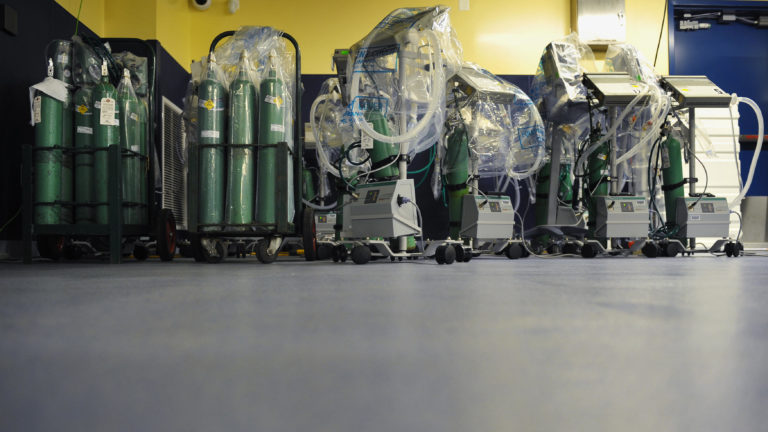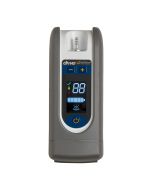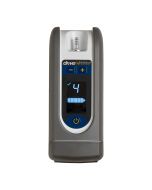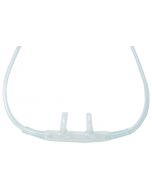
What could a fit mountaineer scaling the world’s tallest peak possibly have in common with an obese store clerk living at sea level? Both need equipment that can deliver extra oxygen but may have trouble getting it.
The New York Times recently published a harrowing story detailing how oxygen suppliers on Mount Everest have put climbers at risk by cutting costs to maximize profits. Some climbers have been harmed — the exact number is unknown — and some may have died due to a lack of oxygen.
A similar problem is occurring across the United States, due to cost-cutting in the medical equipment industry and oxygen being defined as “equipment” rather than as essential medication.
As physicians who care for people with lung disease, we witness daily the struggle to get oxygen therapy for patients who need it. These struggles manifest as long waits for equipment with innumerable back-and-forths between us, our staff, insurers, and the durable medical equipment companies that supply oxygen. Like the climbers on Everest, some of our patients have been harmed.
One had to delay cancer treatment because she did not have enough oxygen to travel to her appointments for radiation therapy. Several need so much oxygen that they must rely on family members to pick up their tanks from suppliers because they make deliveries only twice a month. One could not get enough oxygen to safely drive his wife to dialysis.
We wouldn’t tolerate a pharmacy failing to provide prescribed medication. We shouldn’t tolerate companies failing to deliver oxygen therapy, which is a lifeline for 1.5 million Americans.
Consider Mr. E, who has obesity hypoventilation syndrome. Excess weight on his chest makes it so difficult to breathe that his lungs simply cannot keep up with his body’s need for oxygen. By the time Mr. E made it to our clinic, his chronically low oxygen level had caused his body to make extra red blood cells, thickening his blood and putting him at high risk for having a stroke. This was a medical emergency, one that was worsening with every breath he couldn’t take.
Although Mr. E already had home oxygen in the form of a bulky machine that required constant power, he did not have portable oxygen that could get him through his workday restocking shelves in a grocery store. The small tanks he received lasted only an hour. Larger ones were cumbersome and still wouldn’t last a whole shift. But he had to work, so he did — without supplemental oxygen.
What he needed was a portable oxygen concentrator: a small, lightweight machine that concentrates oxygen from the air. We ordered one for him. He waited 39 days to get it.
Stories like this are frustratingly common. In a 2016 survey of nearly 2,000 people who use supplemental oxygen, half reported problems ranging from broken equipment to inadequate portable oxygen. Such issues cause anxiety, social isolation, and increased use of health care.
Why such rampant problems?
Oxygen is paid for and provided in a different way than most medications. The government considers it to be “equipment,” putting it in the same category as wheelchairs, walkers, commodes, and the like. Lumping oxygen with essential but non-lifesaving equipment has had unforeseen consequences.
To reduce equipment expenditures, back in 2011 the Centers for Medicare and Medicaid Services implemented a competitive bidding program that forces durable medical equipment companies to compete for contracts. To land bids, companies have had to agree to ever-lower reimbursement for their services. Today, winning a bid can mean losing money, especially in rural settings where suppliers serve few patients over large areas. As a result, 41% of durable medical equipment companies closed between 2013 and 2017. Those that remain have cut costs by reducing selection, patient education, and delivery days, which has generally led to poor service.
This brings us back to Mr. E. The company we initially ordered his portable oxygen concentrator from had stopped carrying the devices, something we learned more than a week after placing the order. A different supplier turned us down because the portable concentrator it carried wasn’t able to deliver oxygen at the rate Mr. E needed. Our next order was rejected because the company would provide Mr. E with a portable oxygen concentrator only if it also provided his home oxygen. So we submitted the fourth-order, this time for both a portable concentrator and home oxygen, even though Mr. E already had the latter from a different company. Three phone calls later, we were promised everything would be delivered within 24 hours.
It took five days.
This is unacceptable. It’s not OK for Mr. E and it’s not OK for the other Americans who need oxygen therapy.
We all need oxygen: whether we are fit, healthy, and trying to summit Everest or disadvantaged, ill, and trying to earn a living at sea level. It’s time to reconsider the wisdom of lumping lifesaving oxygen therapy with mobility devices and commodes. New payment models are needed to provide incentives for companies to institute high-quality service. Until reimbursement improves, it will be hard to expect much of oxygen suppliers. Current reimbursement makes good service a losing proposition.
Brian Block, M.D., and Neeta Thakur, M.D., are pulmonary and critical care physicians at Zuckerberg San Francisco General Hospital. Thakur is also a faculty member with the Center for Vulnerable Populations, which is based at the hospital, and a participant in the OpEd Project.




Comments
Leave A Reply
Your email address will not be published.